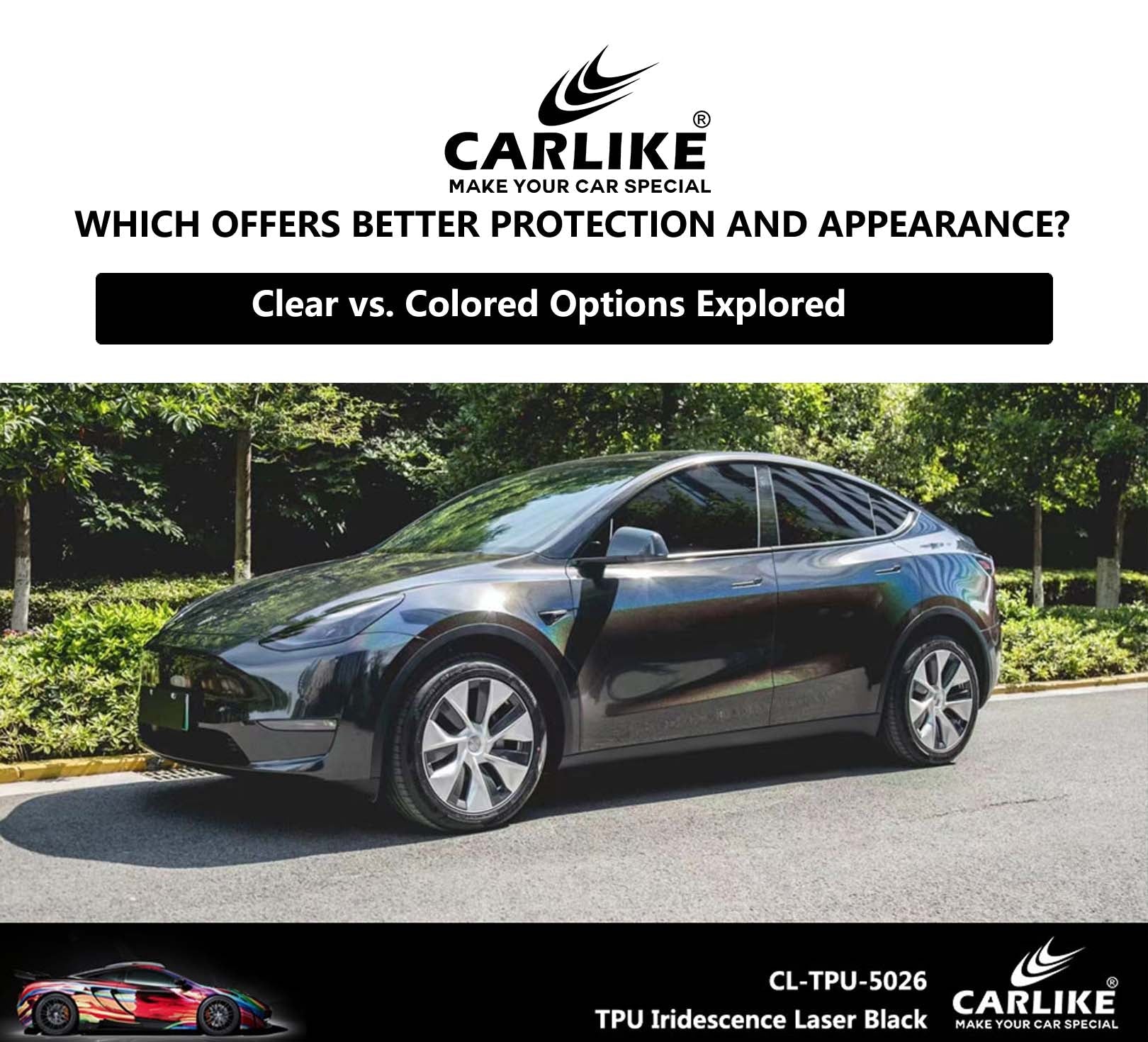CARLIKE-Make Your Car Special.
Introduction to TPU PPF
Brief Overview of Paint Protection Film (PPF)
Paint Protection Film (PPF), also known as clear bra or clear film, is a thermoplastic urethane film applied to the exterior painted surfaces of a vehicle to protect them from damage. This transparent film acts as a barrier against a variety of potential hazards that can harm a car's paint, such as rock chips, scratches, road debris, insect splatters, and UV rays.
Importance in Vehicle Protection
TPU PPF plays a crucial role in maintaining the appearance and value of a vehicle over time. With the constant exposure to environmental factors and everyday road hazards, a vehicle's paint can quickly become damaged and deteriorated. PPF offers an added layer of defense, helping to preserve the original paintwork and ensuring that the vehicle retains its aesthetic appeal.
Moreover, TPU PPF is designed to be self-healing to some extent, meaning that minor scratches and abrasions on the film can disappear over time with the application of heat. This feature helps to keep the film looking new and maintains the protective integrity of the surface underneath.
Tools and Equipment Needed
1. TPU PPF Material: High-quality Paint Protection Film designed for automotive use.
2. Cutting Tools: Precision cutting knife or utility knife with sharp blades for trimming the TPU PPF to fit specific areas.
3. Squeegee: Soft or hard squeegee for smoothing out the PPF during installation, ensuring no air bubbles are trapped.
4.Spray Bottle with Slip Solution: A mixture of water and a few drops of baby shampoo or dedicated slip solution to lubricate the TPU PPF during installation.
5. Heat Gun or Infrared Lamp: To help conform the TPU PPF to complex curves and edges, aiding in adhesion and minimizing wrinkles.
6. Microfiber Towels: Soft, lint-free towels for cleaning the vehicle's surface and removing excess water or slip solution.
7. Isopropyl Alcohol (IPA): To clean and degrease the vehicle's surface thoroughly before TPU PPF application.
8. Tack Cloth: For removing any fine dust or particles from the vehicle's surface right before applying the TPU PPF.
9. Masking Tape: To mask off areas not being covered by TPU PPF and to secure the PPF in place during the installation process.
10. Soft Bristle Brush or Detailing Brush: For cleaning hard-to-reach areas and ensuring theTPU PPF adheres properly to all surfaces.
11. Measuring Tape: To accurately measure and cut the TPU PPF to fit specific sections of the vehicle.
12. Magnifying Glass or Loupe: For inspecting the TPU PPF edges and ensuring there are no gaps or imperfections in the installation.
Having these essential tools and equipment on hand will help ensure a smooth and successful TPU PPF installation, achieving optimal protection and a professional finish for the vehicle's paintwork.
"TPU PPF, TPH PPF Car Paint Protection Film”
Application Techniques
1. Prepare the Vehicle
- Clean the Surface: Wash the vehicle thoroughly to remove dirt, grease, and other contaminants.
- Use a mild automotive detergent and water, followed by a rinse with clean water.
- Decontaminate the Surface: Use a clay bar or a surface prep solution to remove any embedded contaminants that may affect the adhesion of the TPU PPF.
2. Gather Your Tools and Materials
- PPF Sheet: Ensure you have the correct size and type of TPU PPF for your vehicle.
- Squeegee: A soft rubber squeegee will help smooth out the TPU PPF and remove air bubbles.
- Spray Bottle with Slip Solution: Create a slip solution using water and a few drops of baby shampoo or dedicated slip solution to aid in positioning the PPF.
- Heat Gun: This will be used to help stretch the PPF for better adhesion and to activate the self-healing properties of some PPF types.
- Microfiber Towels: Use these to dry the vehicle and wipe away excess slip solution.
3. Position the PPF
- Measure and Cut: Measure the area where you'll be applying the PPF and cut the film to the appropriate size, leaving a few extra inches for adjustments.
- Apply Slip Solution: Spray the vehicle's surface with the slip solution to create a slippery surface for positioning the PPF.
4. Apply the PPF
- Peel the Backing: Carefully peel back a portion of the backing from the PPF sheet, exposing the adhesive side.
- Position the PPF: Place the exposed adhesive side of the PPF onto the vehicle's surface, aligning it carefully with the edges and contours.
- Smooth Out the PPF: Use the squeegee to smooth out the PPF from the center towards the edges, pushing out any air bubbles as you go.
- Stretch and Conform: If necessary, use a heat gun to gently warm the PPF, allowing it to stretch and conform to complex curves and contours.
5. Finalize the Installation
- Trim Excess Material: Once the PPF is applied and smoothed out, use a sharp knife to trim away any excess material along the edges and contours of the vehicle.
- Press and Seal: Go over the entireTPU PPF surface with the squeegee once more to ensure a tight seal and smooth finish.
- Inspect for Imperfections: Carefully inspect the TPU PPF for any imperfections, bubbles, or creases. If necessary, use the heat gun and squeegee to correct any issues.
6. Allow Time to Cure
- Curing Period: Allow the TPU PPF to cure for at least 24 to 48 hours before exposing it to water or extreme conditions. This allows the adhesive to fully bond with the vehicle's surface.
7. Maintenance and Care
- Regular Cleaning: Clean the PPF regularly with a mild automotive detergent and water to maintain its appearance and protective qualities.
- Avoid Harsh Chemicals: Avoid using abrasive cleaners or harsh chemicals that may damage the PPF.
Conclusion
By following these detailed instructions carefully, you can achieve a smooth and even application of PPF on your vehicle's surface, providing durable protection against scratches, chips, and other potential damage.




